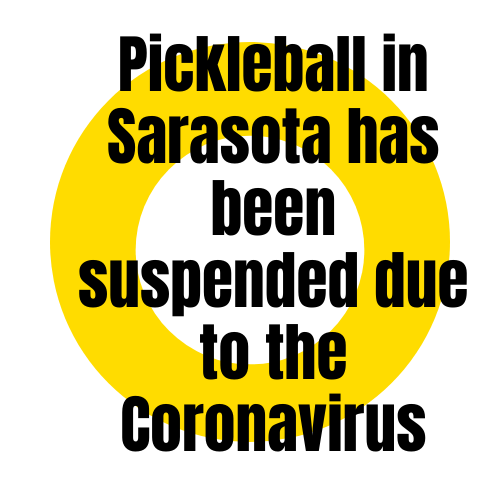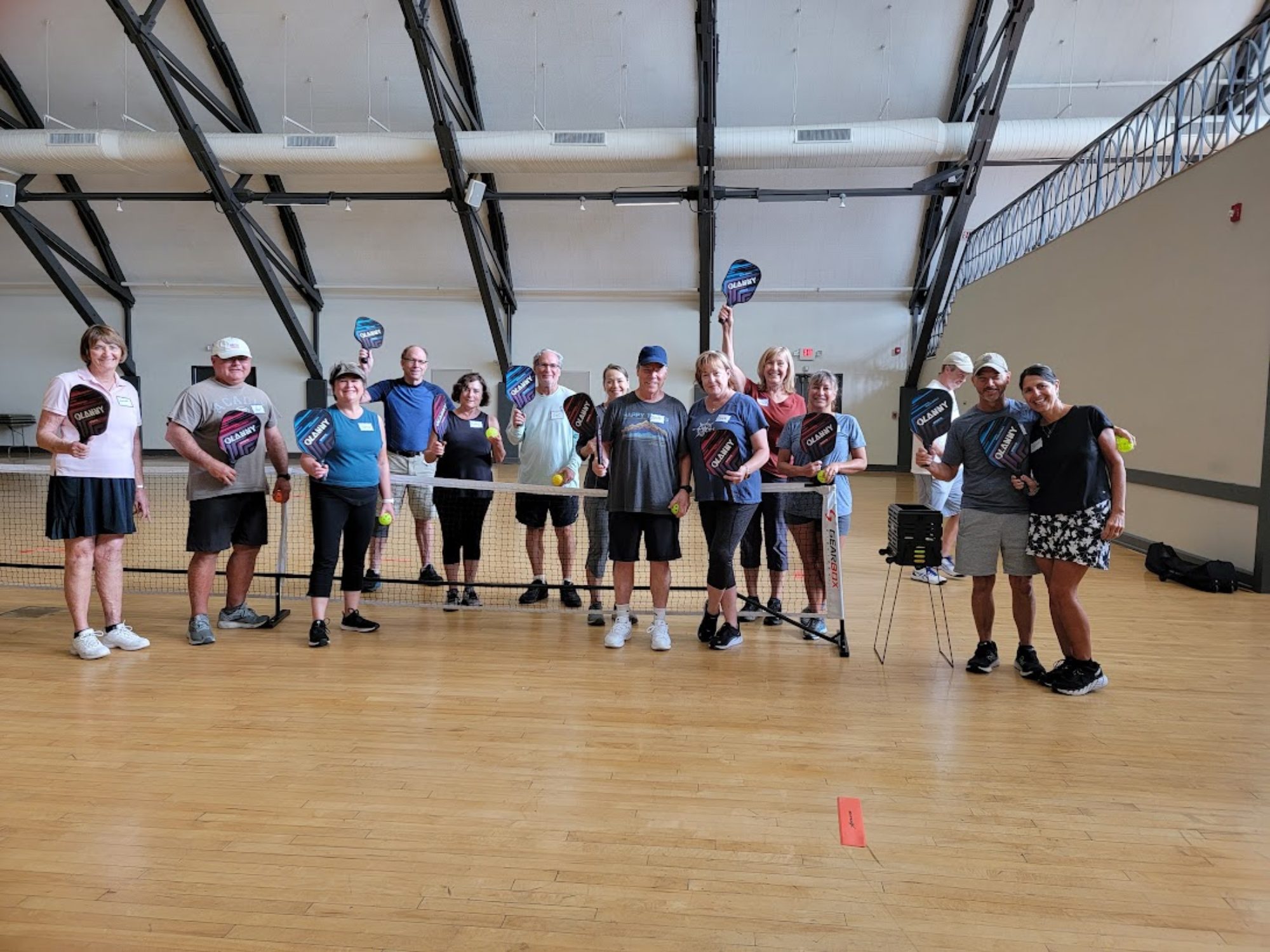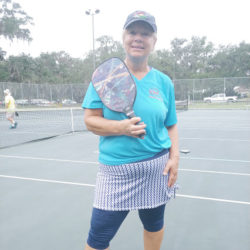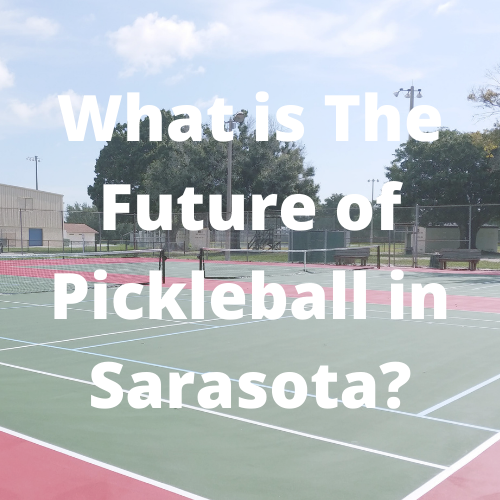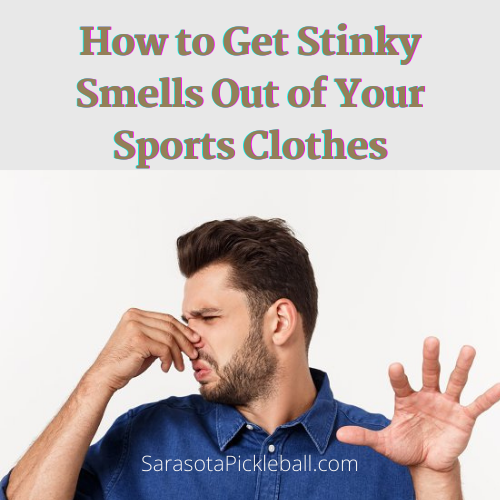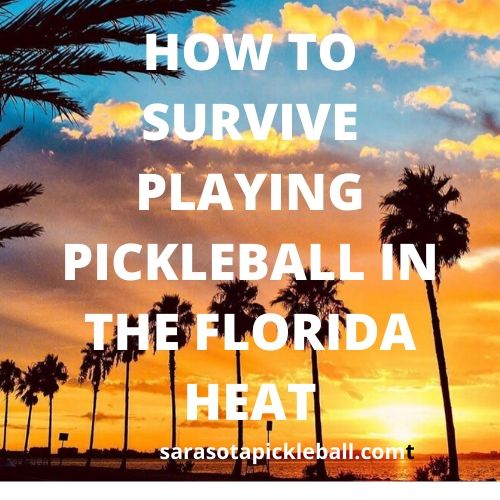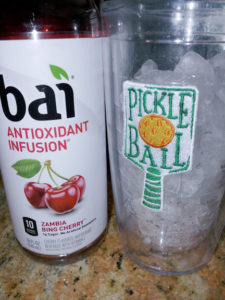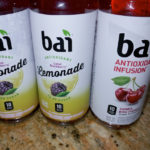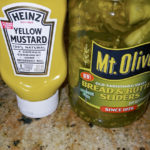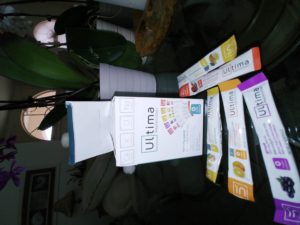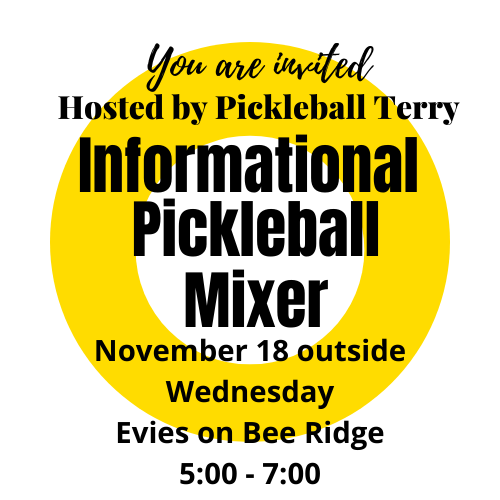
A Dream And a Plan: The Beach Boyz in Fort Myers
I have been following Dan Schuyler on Instagram for a few months and noticed he was posting interesting pictures of a build-out he and friends are doing in Fort Myers for an indoor pickleball court. So, I called him because I wanted to purchase one of his T-shirts. I like the colorful design.
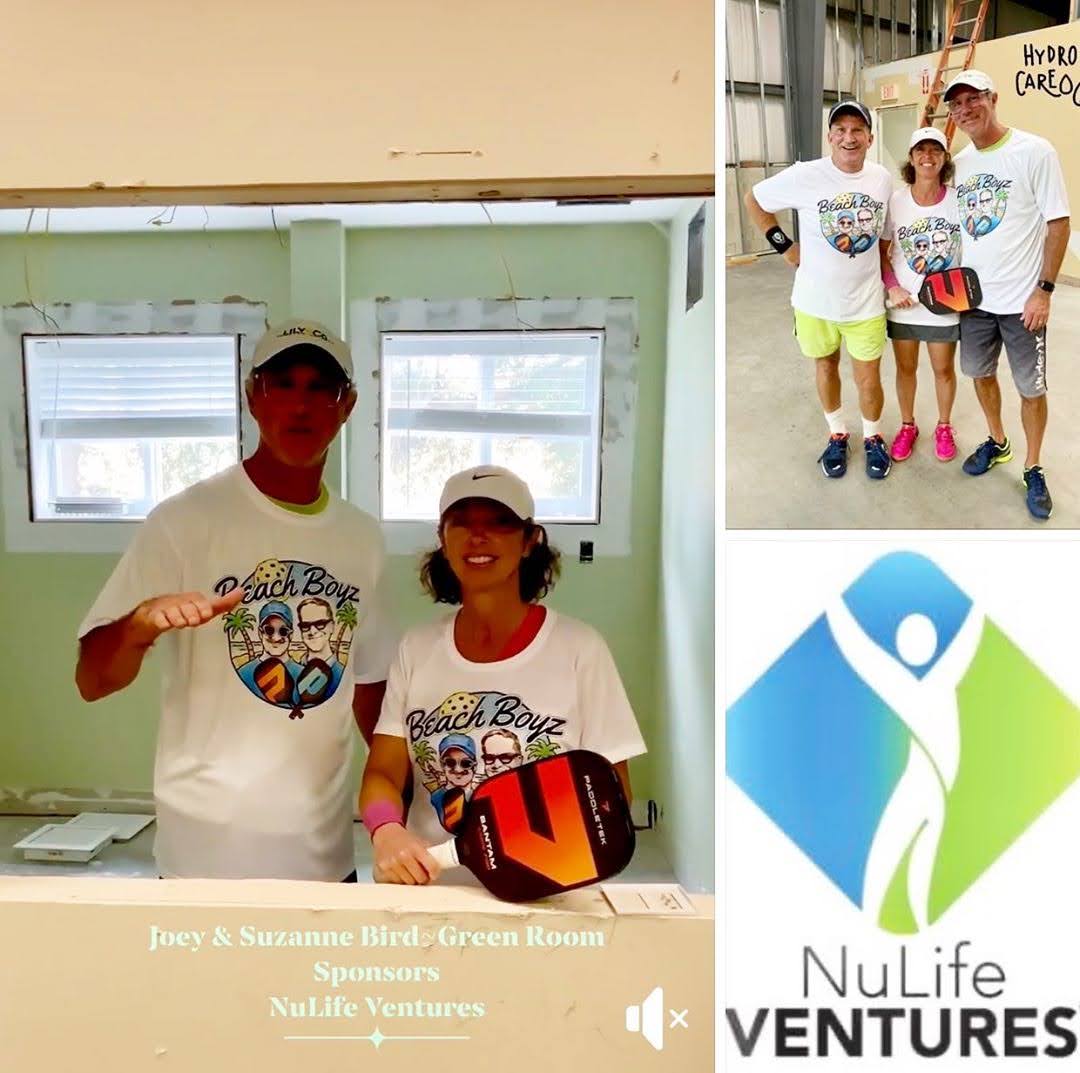
Dan’s history, is he was an avid tennis player and would partner-up with pros like Nick Bollettieri, one of the owners of IMG. One day he was playing tennis on Palm Island and he was asked by the people in a court nearby, to be a fourth for pickleball. He said he always had his nose up in the air when it came to pickleball, believing it was beneath him, but they pleaded. Then he played and was hooked!
When COVID-19 came and with pickleball venues closing down, Dan came up with an idea to purchase a facility and build his own indoor pickleball court. He found a place with 4k sq. ft., purchased it for 1.2 million in Fort Myers and began to find corporate sponsors: Kyle Yates, Nu Life, YOLO, etc.
He plans to have pro clinics, personal lessons, a lounge, a sky box for viewers, peloton bikes, and a large screen to view and analyze players. His moto is, train, play, practice.
Dan wants to make this a go-to destination with a fitness center, dart boards, ping pong, and social functions such as barbecues. (Only one pickleball court.)
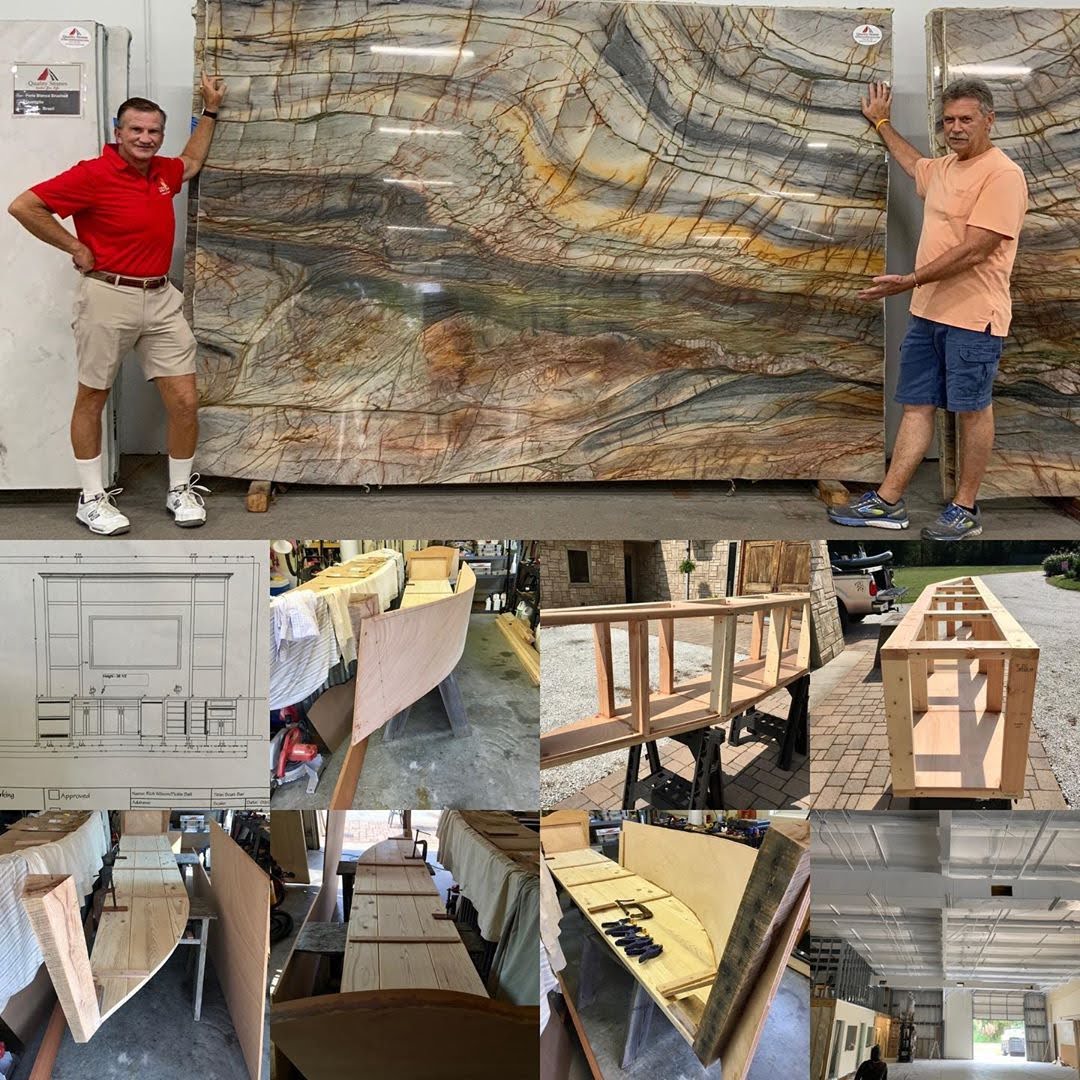
It sounds like a fantastic place for Dan and his friends to hang out. Or if you take a clinic with Kyle Yates that could be your ticket in.
Doesn’t exactly sound like a money making proposition, and Dan says it is not. He just wants to have fun.
And I did get the T-shirt.
By Pickleball Terry
What is The Future of Pickleball in Sarasota?
What is the Future of Pickleball in Sarasota?
There I was, driving down a two-lane country road in Moriah, New York; a town with more cows then humans, when I came across four dedicated pickleball courts. Huh? Right there on the side of the road, across from a pasture dotted with black and white cows. I slammed on the breaks because I could not believe my eyes. Here in this bucolic setting were pickleball courts, dedicated pickleball courts. This was three years ago when I was visiting upstate New York. How did the residents of the farming community of Moriah get four outdoor courts while in north Sarasota and close to the area where I live, and with a much more affluent and larger tax base, not have dedicated pickleball courts?
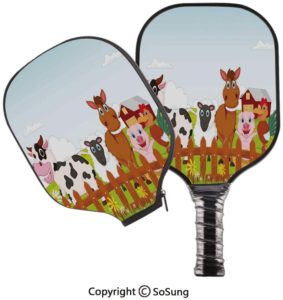
While Sarasota County has graciously lined their gyms for pickleball, play is at limited times and availability, and not enough courts for competitive tournaments and clinics. Plus, visitors ask me all the time for outdoor court locations because they come down here escaping the cold and want to play in the sun. There are no dedicated outdoor courts in north Sarasota county, as of yet. In south Sarasota, I can send them to Venice at Bypass Park and Englewood Sports Complex which has dedicated courts but that is a good 45 minute drive from my home. Somebody said if you are traveling that distance you might as well go to Pickleplex in Punta Gorda, the outstanding new complex devoted to pickleball with 16 courts and more to come.
I had the opportunity to speak to Jim Wormley, Sarasota Parks and Recreation Manager, who has been our go to person for pickleball questions. We talked about the lack of dedicated courts, and he confirmed that in 2021 there will be 6 dedicated pickleball courts built next to the athletic building at Longwood Park. And in the future, 12 dedicated pickleball courts will be constructed next to Babe Ruth Park where the old DMV was off Fruitville, known as the Pompano Project. (In the future could mean a few years.) Below is an old flyer showing the indoor places to play in Sarasota.
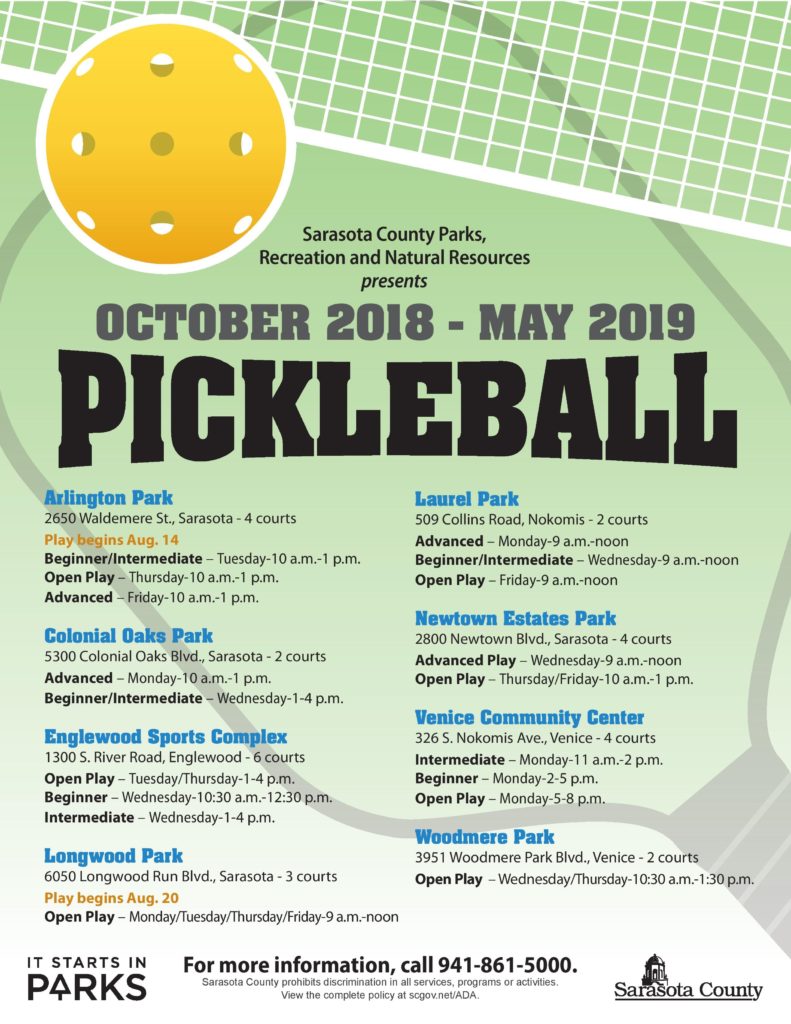
Currently, there are 6 dedicated courts in Central County at Bypass Park and 6 dedicated courts in the South County at Englewood Sports Complex. There are also 42 shared court opportunities throughout the County.
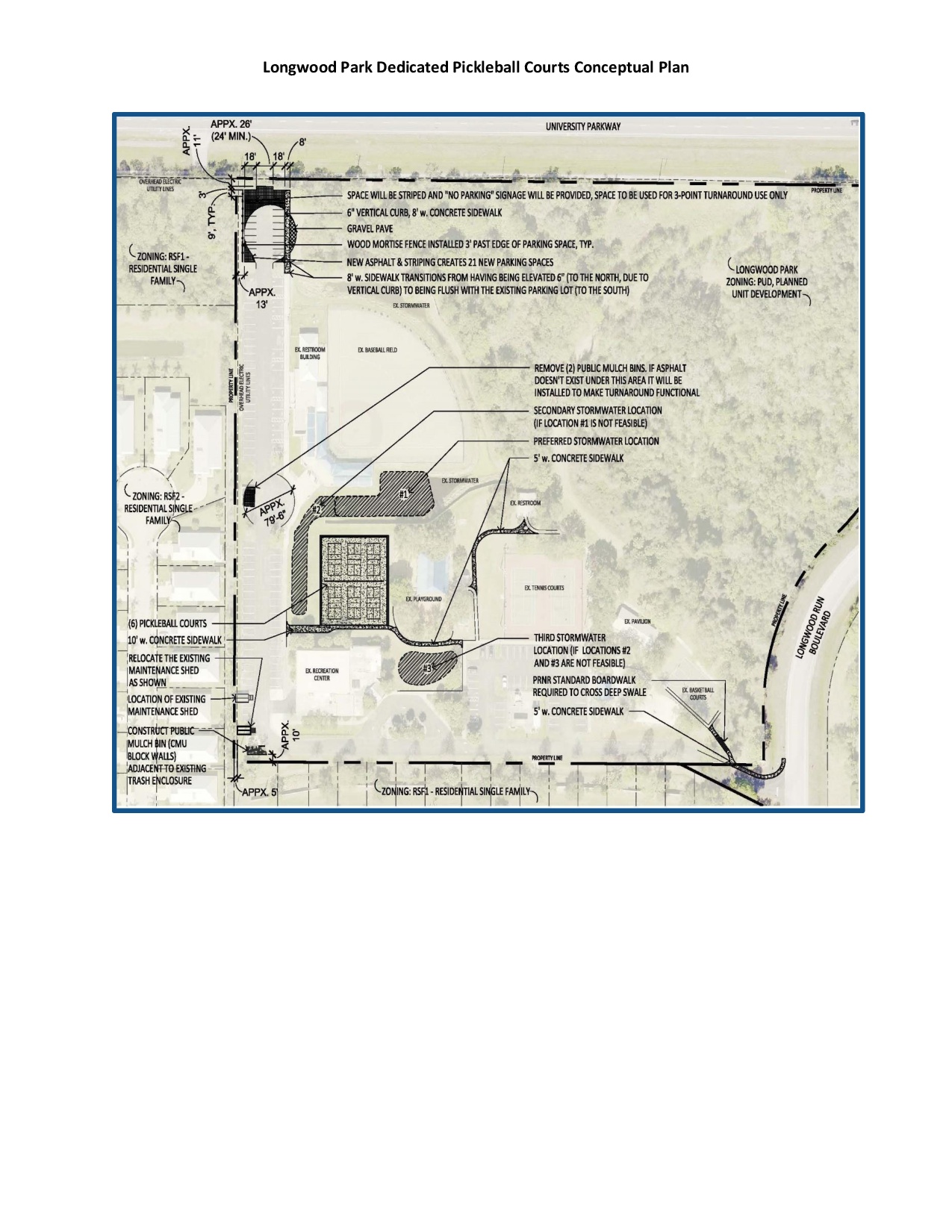
A few newsletters ago, I posted a conceptual drawing of the proposed North County Athletic Project that will possibly have 12 dedicated pickleball courts. That plan is from 2016 and is in very early planning stages and things may change. The proposed location is off Martin Luther King Drive by Newtown Park.
A far as the City of Sarasota and pickleball goes, their conceptual master plan does NOT have pickleball courts. There currently are two facilities for indoor pickleball, Arlington Park and RL Taylor Community Complex; plus outdoor at Gillipsie Park on the tennis courts where one court is lined for pickleball (2 courts), and they have nets available that players can move on and off.
There lies the problem, sharing courts with tennis players. Tennis players are not happy. They have had the luxury of showing up to play anytime of day and having no trouble finding a court. Now, what is this? Pickleball players are taking over?! This has led to some very uncomfortable confrontations. I was playing on the Siesta Key courts when our ball traveled onto the adjacent court and a snarling tennis player threw it back and warned us it better not happen again. Gulp!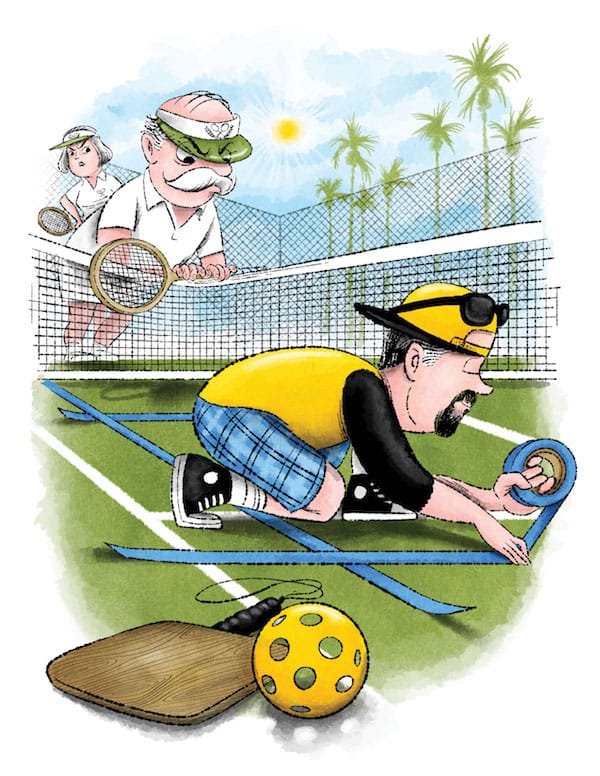
At Colonial Oaks Park where one of our pickleball players has taken it upon himself to loosely organize drop-in play every day on the shared tennis courts, tennis players can come and demand a court as they are entitled to have first-dibs on one side. So, let me paint the picture. We have over 20 people playing on 4 courts and they must relinquish 2 courts where 8 players were playing for 2 tennis players. But the tennis players have had the courts for years and why do they have to share with pickleball players? It is the skiers versus the snowboarders all over again.
What about other municipalities?
A Sarasota pickleball enthusiast can’t help but look at complexes such as Naples with envy with 54 pickleball courts in one location! It was a grass-roots effort by two women, Chris Evon and Terri Graham, co-founders of the Minto US Open Pickleball Championships. They had an idea and spoke to the right people and viola! Check out the video below to learn how Chris and Terri had a dream and made it possible.
Then there is the Pickleplex in Punta Gorda. Again, one person with an idea and makes it happen. His name is Ted Keregis, and with his connections and drive, he was able to have Florida Southwest University lease land for the complex. He and the Pickleplex Board received donations from private individuals, the City, and there has to be a big donor like Allegiant….that is just rumor. Kegeris expects the new complex to be a $6 million economic impact on the county.
Pickleplex just hit a snag with the coronavirus. Its estimated yearly operating budget is around 100k, and with tournaments and clinics cancelling they announced this summer that they would start to charge membership, even though they thought they never would. This fluttered a few feathers including the City that had donated 65k in the understanding that it would always be open to the public.
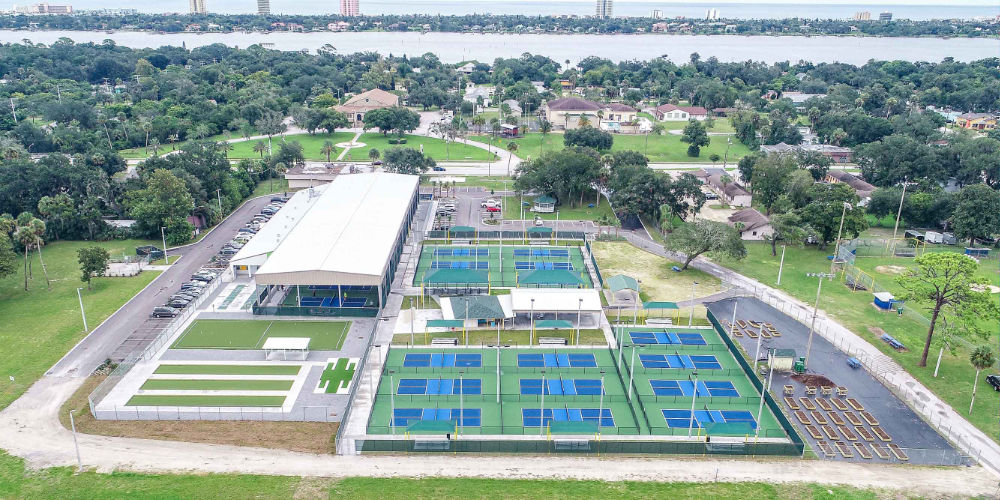 And to the east is the Pictona near Daytona. A mega complex that includes 24 pickleball courts, some covered, a clubhouse, and a restaurant. Rainer and Julie Martin, retired to Daytona and loved pickleball. They saw an underused park in Collier County and approached the county representatives with a dream and a plan. They also donated 3 million which became 4 million because plans do grow. Along with the Martin’s donation, Holly Hill, which is where the park is located, donated 1.5 million, and they received 1.5 million from an Echo Grant. The rest is history.
And to the east is the Pictona near Daytona. A mega complex that includes 24 pickleball courts, some covered, a clubhouse, and a restaurant. Rainer and Julie Martin, retired to Daytona and loved pickleball. They saw an underused park in Collier County and approached the county representatives with a dream and a plan. They also donated 3 million which became 4 million because plans do grow. Along with the Martin’s donation, Holly Hill, which is where the park is located, donated 1.5 million, and they received 1.5 million from an Echo Grant. The rest is history.
Visit Sarasota
I spoke to Shelby Connett, from Visit Sarasota, and asked her if she knew about the popularity of pickleball, and that I being Sarasota Pickleball, receive a lot of calls/emails from visitors who wish to vacation in Sarasota and play competitive pickleball. After I “dance” around the lack of organized outdoor play near places like Siesta Key with the callers, some end up going down south where they know they can find a good game. The economic impact of not having a large pickleball center in Sarasota is too massive to overlook.
If the Sarasota leaders and government officials think that a need for pickleball is being filled because the new housing developments are putting in pickleball courts, they are incorrect. Where are the vacationers going to play? The hotels, restaurants and other tourist entertainment spots will greatly benefit from Sarasota being a pickleball destination. It is the fastest growing sport! I speak to vacationers who tell me that they play pickleball in the morning and go to the beach in the afternoon. They also have to stay somewhere, they have to eat somewhere, they have to go to the Mote or Ringling Museum. Forward thinking, Sarasota can be a fantastic pickleball destination.
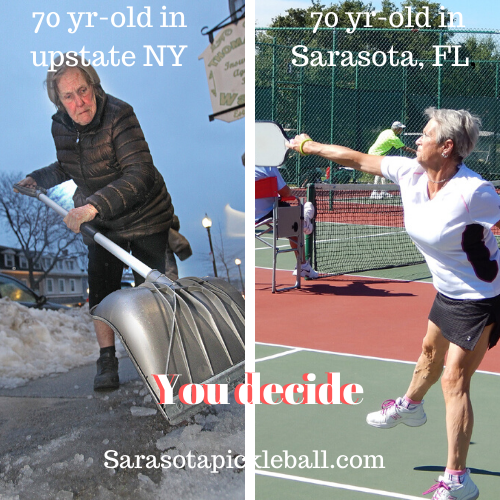
So what to do?
I can see from the other pickleball complexes, that it all begins with private donations. The Sarasota Pickleball Club which was started by Coach Russell (who has since relocated to North Carolina) now has a new board and they have been collecting funds towards someday having enough to approach the County with a plan. But if they or anyone plans on replicating a Pickleplex here, they will need a few individuals or a company with deep pockets to come up with substantial funds. Meanwhile, the funds that the Club has been collecting could go towards, let’s say, new lights at the Longwood Park pickleball courts. Right now there are no plans for lights.
In conclusion…
Let me add that I mean no disrespect to the Parks and Recs or City by writing this because they have done a wonderful job of providing pickleball for players in their facilities, and by painting lines on the tennis courts. Their staff has always been helpful and go out of there way to be of assistance, and therefore promote pickleball. Believe me, I know that they have other things to think of besides pickleball.
Also, the Our Y’s have just celebrated their 1 year anniversary and they too have gone out of their way to provide a place to play pickleball.
Another shout out to the McCarthy’s for sticking to their plans to build an indoor, private facility, and the other couple of guys I know that call me and are working on a dream and a plan.
To quote a movie….
If you build it, they will come.
Thanks for reading,
Pickleball Terry
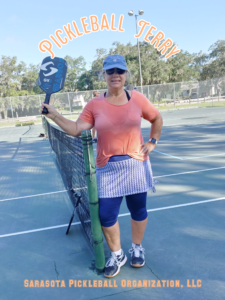
The Ben Johns Paddle Review!
How to get smells out of your sports clothes
It happened to me. Smelly sports clothes. I have to admit, it snuck up on me. I was driving to pickleball and I was wearing a clean, quick-dry shirt when I noticed an oder. What the heck?! Was that me? Yup. I was a victim to smelly workout clothes. Shocked!
I soon realized that washing in normal detergent wasn’t going to cut it anymore after playing for hours in the Florida weather, and hours of sweaty bacteria building up in my clothes. What to do?
Researching on the internet, I soon found a few tricks.
You have a bacteria situation going on. This happens when you sweat and sweat and do not get all the bacteria out. So you need to tweak your pickleball clothes laundering routine.
-
- Add a cup of white vinegar to your wash.
- Use special sports detergent like Tide Sport
- Wash your clothes immediately after getting off the court. Don’t let them sit around in a laundry basket.
- Use bacteria eating Lysol Sanitizer (It works)
- I also use Borax in my wash that does a pretty good job.
After attacking the problem, voila! Problem solved. Stinky smells are gone for good.
Have fun on the courts!
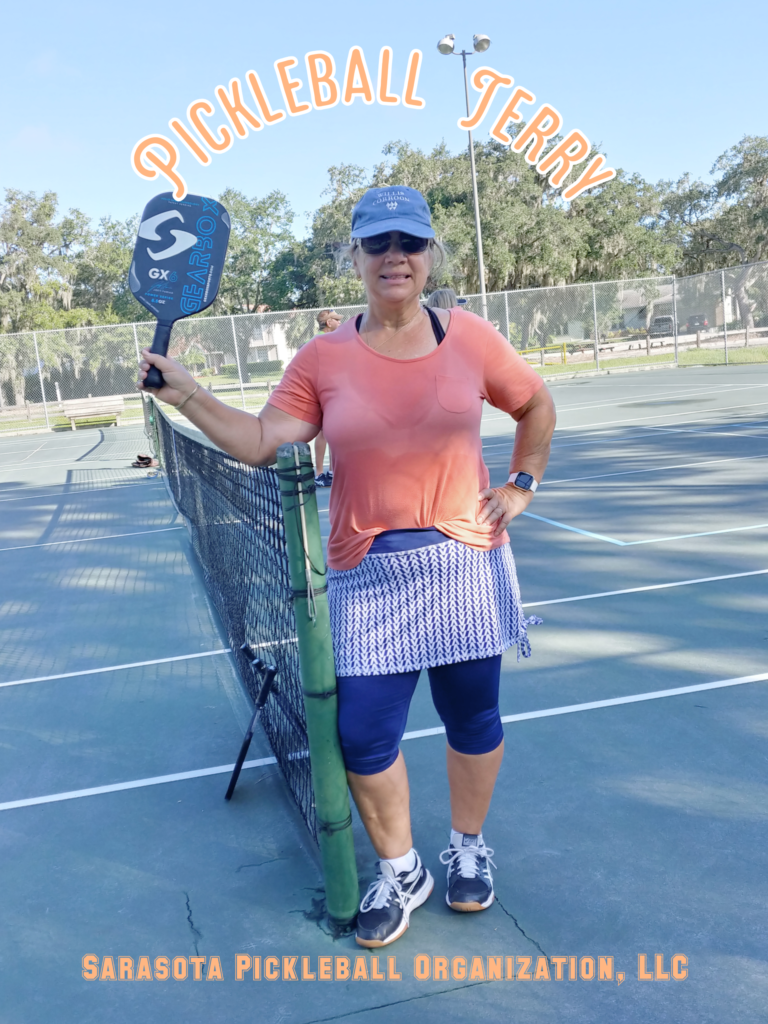
How to Survive Playing Pickleball in the Heat
It’s not easy playing pickleball in the Florida heat and humidity. Some players will handle the extreme temperatures better than others, but what everyone should watch out for is heat exhaustion or heat stroke. This can happen quickly, and it is better to ward off than to try to recover from. Below are some tips that I have learned over the years.

- Proper clothing. A hat is extremely important. I use a mesh hat that provides protection from the sun but allows for cooling. Don’t have a mesh hat? Soak your hat in ice water, squeeze out the excess water and put it on. Repeat as needed.
I read the reviews on the cooling shirts and they don’t really work, so save your money. What some of our pickleball players do, is soak their shirts in water before putting on.
2. Ice, ice baby! A must-have is a cooler with ice. Use it to keep your water cold, and apply ice to the back of your neck and wrists 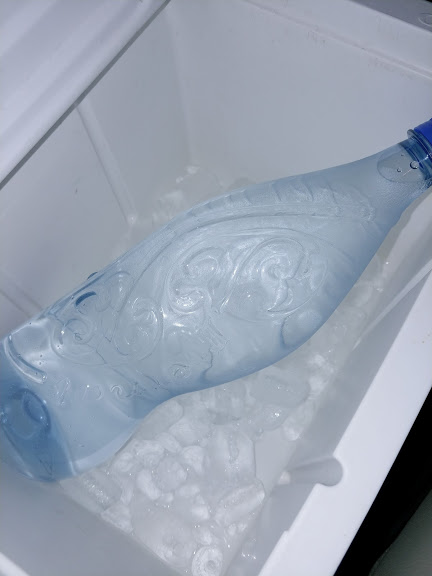 between games. I recommend bringing a pickleball Tervis tumbler and adding ice and water to cool yourself off with. Ice-cold water is better at cooling your body temperature than just drinking water out of a bottle you had sitting on the bench.
between games. I recommend bringing a pickleball Tervis tumbler and adding ice and water to cool yourself off with. Ice-cold water is better at cooling your body temperature than just drinking water out of a bottle you had sitting on the bench.
3. Not just water. It’s a good idea to have have fluids in your cooler that replenishes electrolytes. I will have a bottle or two of Bai. It’s a great pick-me-up that I like to drink between a glass of water.
If you
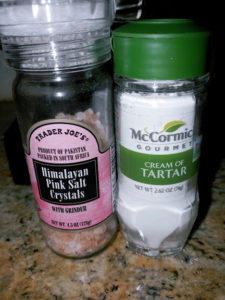
are susceptible to frequent leg cramps, you can make your own recovery drink by adding Cream of Tarter and sea salt to water. Below is the recipe.
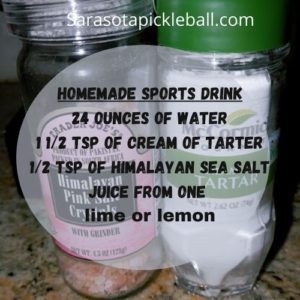
Some players swear by drinking pickle juice or consuming a tablespoon of plain mustard for cramps.
These packets in a bottle of water will replenish electrolytes.
4. Personal fans. The internet is a good source for personal, battery-operated fans. Keep one in your bag for relief between games.
Spray bottles. Add ice and water to this water bottle and spritz away.
5. Sun block. Use a good sunblock on your face and all exposed skin. I use different products for my face (do not put of forehead because it will drip in your eyes when you sweat), and a sunblock spray for my shoulders and legs. I usually apply before leaving the house and it will last for a few hours.
Cooling towels. I don’t personally use one, but I see players with a cooling scarf/towel wrapped around their necks. They say they work.
6. And lastly, if you see someone in distress, call 911 as soon as possible. Move them out of the sun, apply ice to the back of their necks, and keep everyone calm.
If you have any suggestions on how to stay cool on the courts, Please send me a comment.
Thanks,
Pickleball Terry
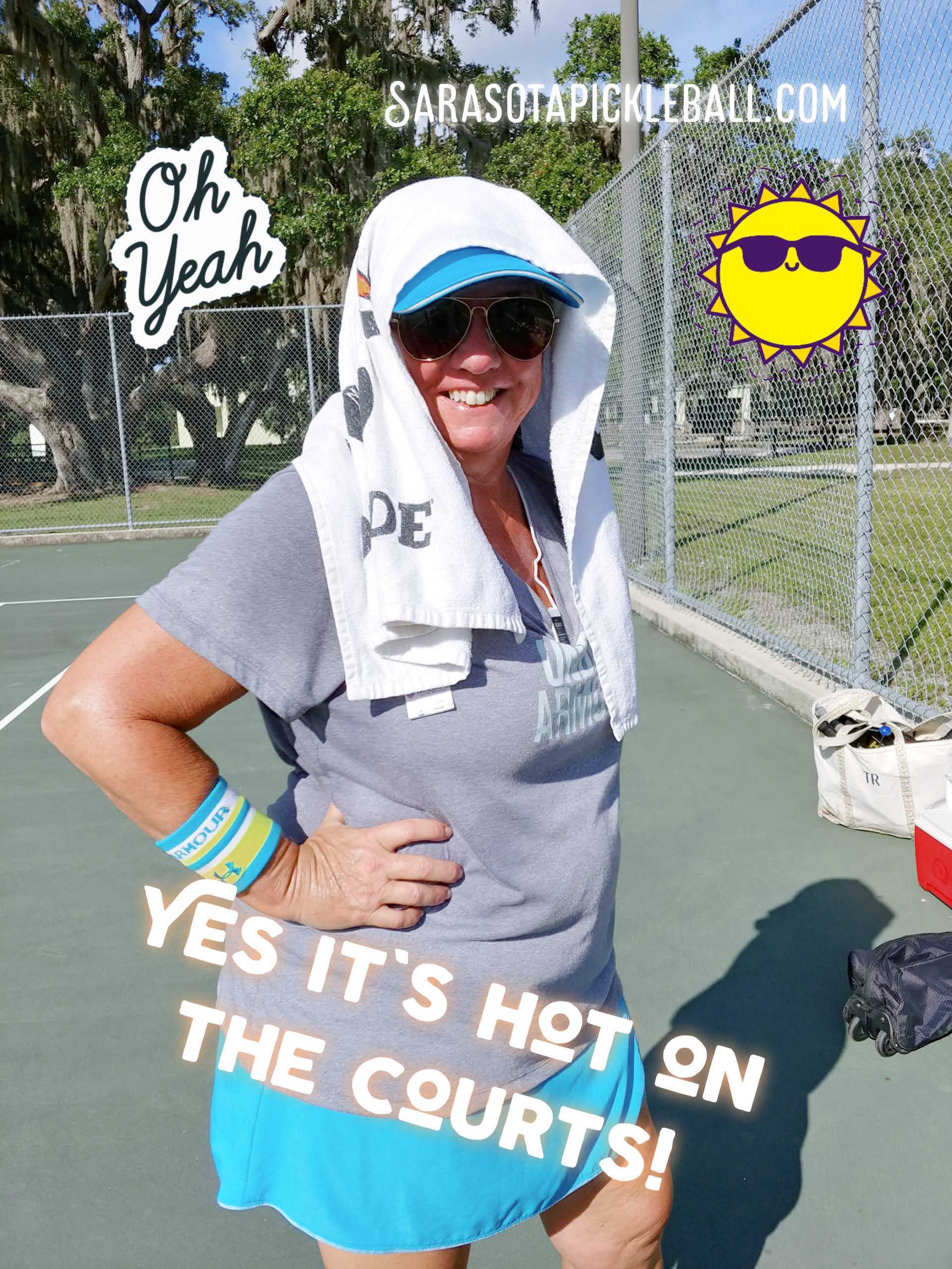
Don’t Crowd Your Partner and Other tips
“Don’t crowd me.” I heard my partner say on the pickleball court. That of course threw both of us off and the ball went flying by giving the opponents a point. Meanwhile I’m thinking…what does he mean? Don’t crowd me?
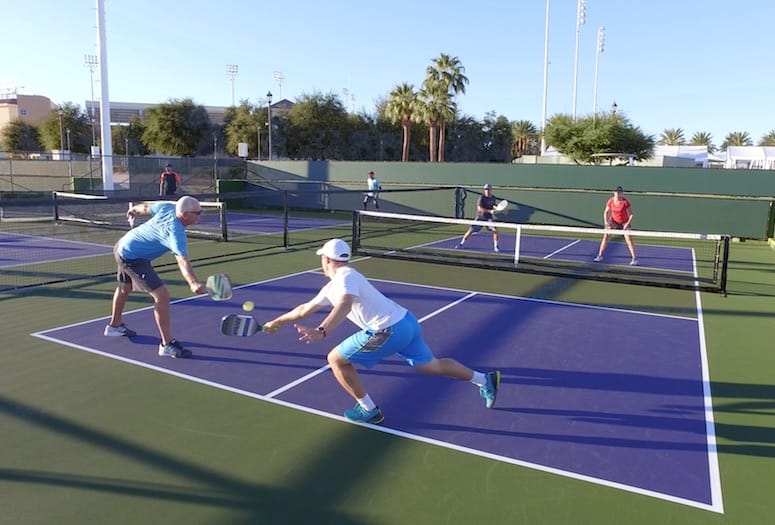
I was a novice player (thank you Ron for giving me the idea to call beginners NOVICE) and my game was all over the court. I was where I wasn’t suppose to be, unprepared for return of smashes, terrible at dinking, and anyone could lob over my head as I stood there. Pickleball is easy to learn but hard to master.
What did he mean?
Crowding your partner is when you get too close as he/she goes for a return shot and YOU become a distraction. The correct thing to do when a ball comes flying over the net and it is apparent that your partner has a better shot at it, is take a step away sending the subtle message that you know that they are going to take the shot. This may work better than saying, “I got this!” which can be a little distracting. Anything that takes your focus off the ball can cause a fault.
Usually, when you have someone crowding you on the court it is an indication that they don’t have confidence in your game, and are going to try to get to the ball before you do. In a tournament this could be a good thing as the opponents have targeted you as the weaker player and are hitting the ball consistently to you, but you keep missing the return. However, in recreational play, it is better to not hog the ball. (Yes, I know. People call me a ball hog.) Let your weaker partner have a try at returning the ball.
Tip number 2 – poaching
Players don’t poach enough. What is poaching? Poaching in doubles is the art of “anticipating” a weak return from your opponent or moving across the net after the ball is poorly struck and putting the ball away.
It is a aggressive offensive shot BUT make sure you get it over the net or you’ll get the evil eye from your opponet.
Here is a great video explaining POACHING
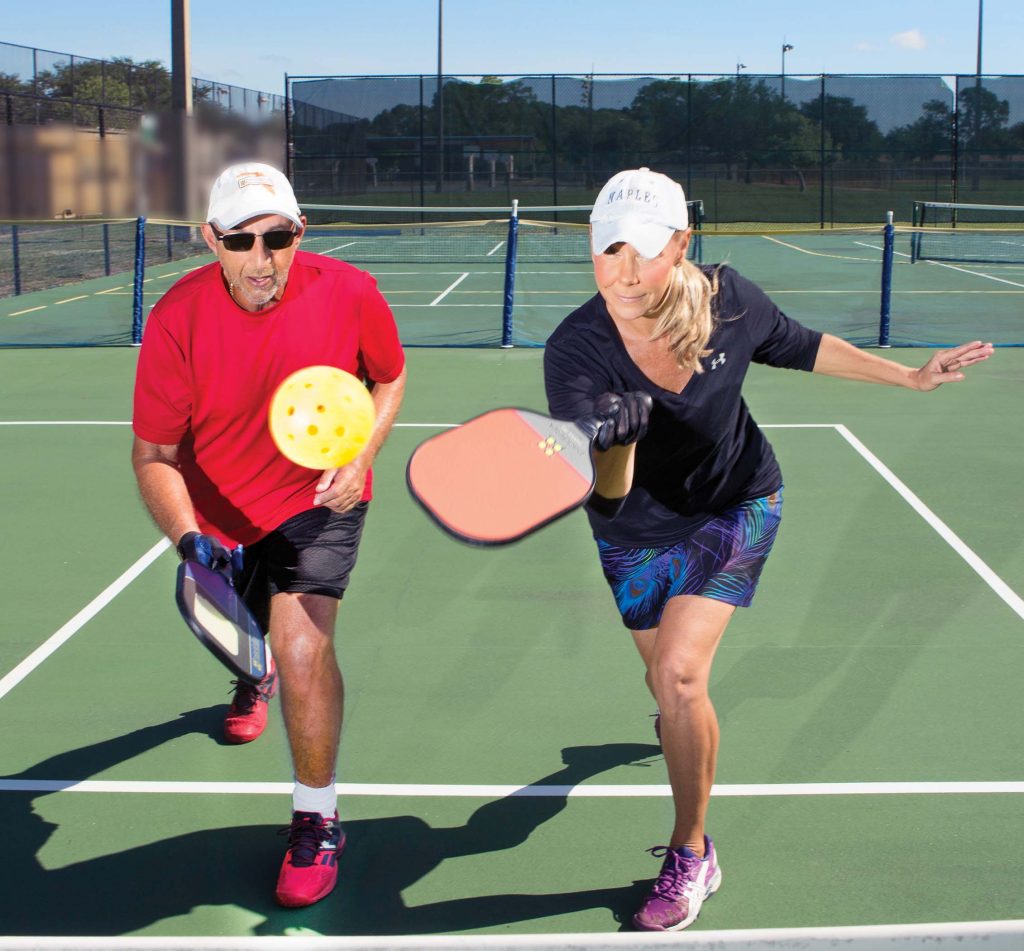
Tip number 3 – Don’t take your partner’s forehand
A forehand shot is more accurate than a backhand shot. In a good partnership the forehand takes most of the shots. As one of the more pro players on the Sarasota Pickleball courts told me, she calls the person with the forehand the TERMINATOR. I have heard novice players scold their partner when they cross the middle court line with their forehand and take the shot, “That was on my side of the court!” The correct play is to let him/her with the forehand take the shot.
Tip number 4 – Always be a supportive partner
You have played with that person. The master of eye rolling, chief of head shaker, and professional frowner. Ahhhh, the negativity that floats around the court when you play with them. When you miss a shot, God help you. They act like they are so disappointed with you that you personally have ruined their day. Ugh! And it is particularly crazy when it is only recreational pickleball.
Please don’t act like it is the end of the world when your partner misses a shot. We all have good days and bad days. I remember everyone that was/is nice to me on the courts. Be that person that people remember and smile about.
Be supportive! A game lasts around 20 minutes and is an opportunity to practice good sportsmanship.
Tip number 5 – Know your limits
Know your limits means know your level. Yes, we all believe we are better than we actually are (guilty), and want to play with the better players. I hear, “How am I going to get better if I don’t play with the better players?” Well, that used to work when pickleball was a new sport but the divide has become wider as the seasoned players have played for many years and practiced over and over again. The beginners have just picked up a paddle. That old saying saying doesn’t cut it anymore, and there are many places for beginners and novices to play with other people at their level. Once they have mastered keeping score, serving, dinking, and stopped hitting the ball out of bounds, then may start playing with intermediate players. A good way to know if you are ready is if you consistently win games. And if you lose every game when you move up to play with the intermediates, you might have to go back to the novices and sharpen your skills.
Are advanced players obligated to play with beginners? No, they are not, but the nice players will give you some tips and possibly play a game or two with you out of the kindness of their hearts.
Here is a skill determination list from the USAPA CLICK HERE
Have fun on the courts. If you have any pickleball questions, please let me know at dinkpickleball@gmail.com .
Pickleball Terry
USAPA Ambassador
Owner or SarasotaPickleball.com
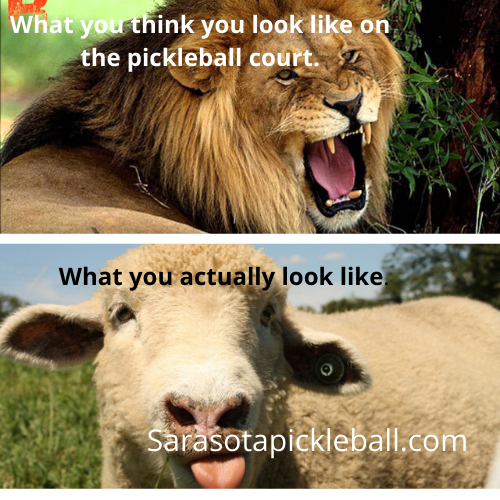
Back Open!
Our Y at Potter Park
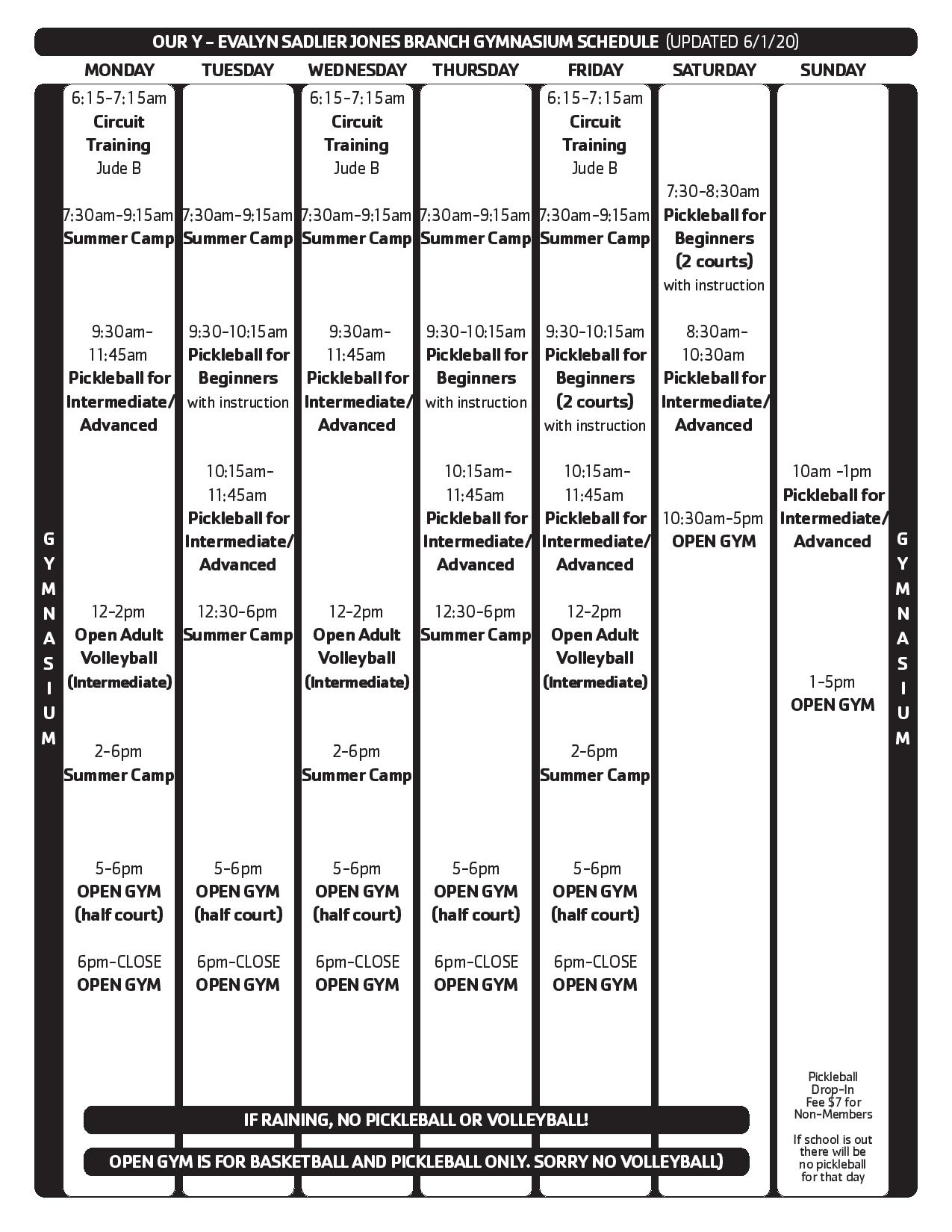
Corornavirus
